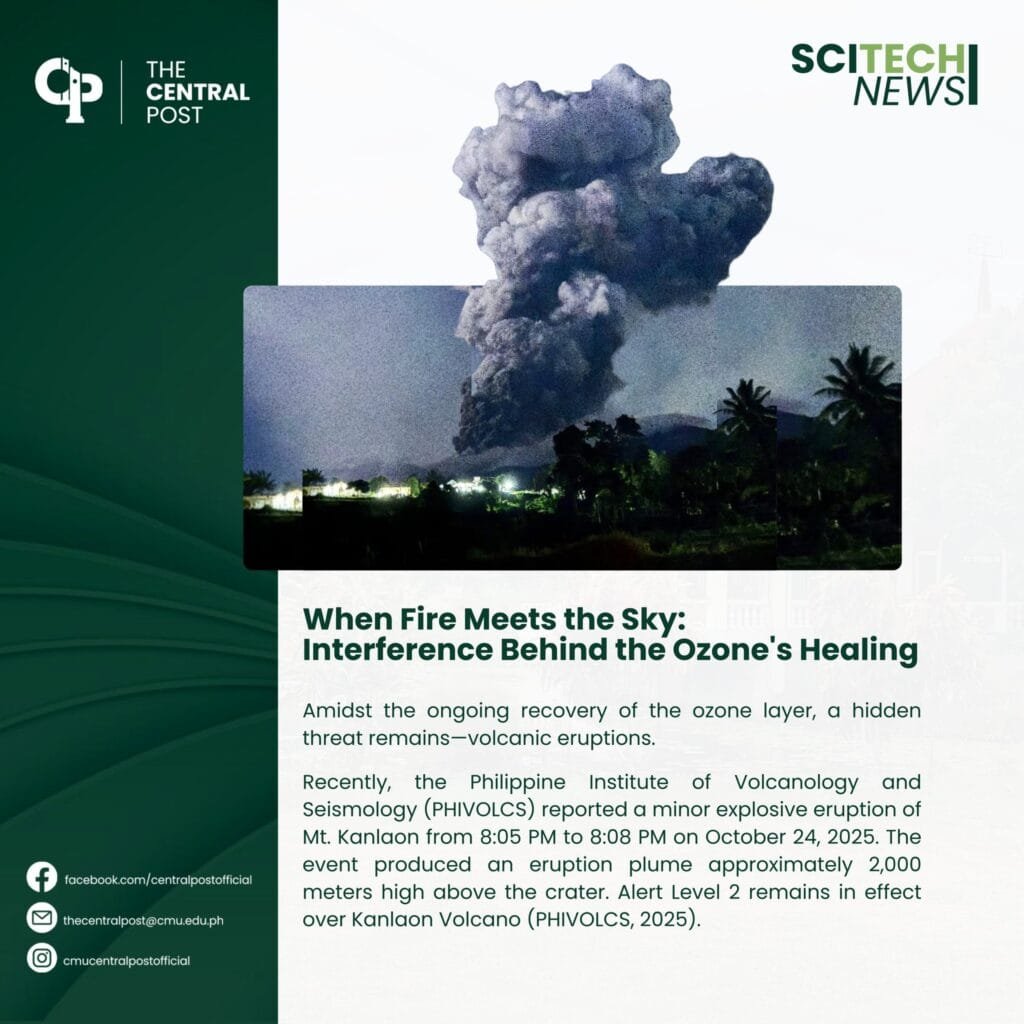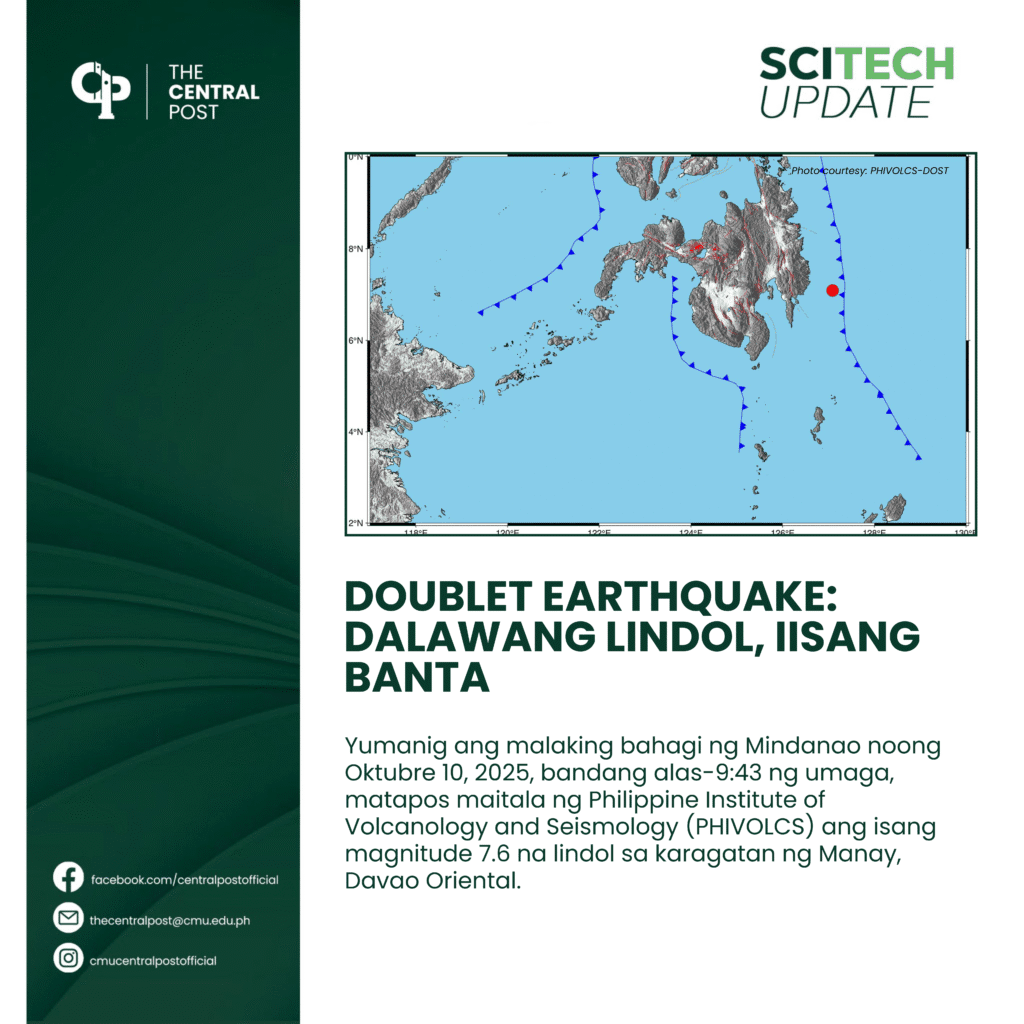Amidst the ongoing recovery of the ozone layer, a hidden threat remains—volcanic eruptions.
Recently, the Philippine Institute of Volcanology and Seismology (PHIVOLCS) reported a minor explosive eruption of Mt. Kanlaon from 8:05 PM to 8:08 PM on October 24, 2025. The event produced an eruption plume approximately 2,000 meters high above the crater. Alert Level 2 remains in effect over Kanlaon Volcano (PHIVOLCS, 2025).
During explosive eruptions, large volumes of volcanic gases, aerosol droplets, and ash are ejected into the stratosphere. The ash particles descend quickly, while gases such as sulfur dioxide (SO₂) can contribute to global cooling, and carbon dioxide (CO₂)—a greenhouse gas—may enhance global warming. Both may influence the condition of the ozone layer (U.S. Geological Survey [USGS], 2024).
Volcanic eruptions are known to release significant amounts of sulfur dioxide, which transforms into sulfuric acid and condenses in the stratosphere to form fine sulfate aerosols. These aerosols trigger chemical reactions that break down ozone molecules, contributing to ozone layer depletion (USGS, 2024).
However, it is important to note that volcanoes account for only 1 to 5 percent of ozone damage, compared to 15 to 20 percent from other natural sources, and a striking 75 to 85 percent caused by human activity (USGS, 2024). In fact, volcanoes release less than one percent of the carbon dioxide currently emitted by human activities (USGS, 2024).
Although future volcanic eruptions may cause temporary disturbance to the ozone layer’s recovery, the long-term outcome remains dependent on human actions. With the continued enforcement of international regulations restricting man-made ozone-depleting substances, the ozone layer’s healing is expected to persist.
Ultimately, the responsibility lies with us—to act decisively and protect our planet’s atmosphere.
Writer: Cherry Belle Pan
Copyreader: jadamersss
References
Philippine Institute of Volcanology and Seismology. (2025, October 24). Kanlaon Volcano Bulletin – Minor explosive eruption report. Department of Science and Technology (DOST-PHIVOLCS).
U.S. Geological Survey. (2024). Volcanic gases and their effects on climate and the ozone layer.
U.S. Department of the Interior. Retrieved from https://www.usgs.gov/
Image source: YouScooper Angela Templado


